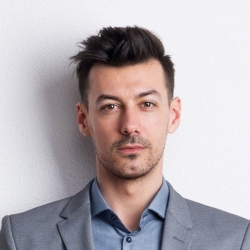
Working to fix multiple helium leaks and thruster issues, the crew of Boeing's Starliner spacecraft wrapped up a challenging rendezvous and delayed but successful docking with the International Space Station on Thursday in a major milestone for the first piloted test flight. of the new ship.
With Commander Barry “Butch” Wilmore and co-pilot Sunita Williams monitoring the Starliner's automated approach, the Starliner's docking mechanism engaged its counterpart in front of the station's forward Harmony module at 1:34 p.m. EDT as the two spaceships sailed 260 miles above. the Indian Ocean.
A few moments later, the Boeing ferry was stopped for a “hard” docking, ensuring a watertight structural seal.
“That was an OK Navy coupling, three wire, complete!” Mission control reported it by radio.
“Okay,” responded Wilmore, a veteran astronaut and former Navy test pilot. “It's nice to be attached to the big city in the sky.”
After extensive checks to verify a watertight seal, the hatches were opened and Wilmore and Williams floated into the laboratory complex to an enthusiastic welcome from the seven members of the Expedition 71 crew: cosmonauts Oleg Kononenko, Nicolai Chub and Alexander Grebenkin, along with NASA astronauts Matthew Dominick. Michael Barratt, Jeanette Epps and Tracy Dyson.
“I'm not sure we could have gotten a better welcome,” Wilmore said, smiling widely. “We had music, we danced, it was great! What a wonderful place to be.”
Williams said, “I just want to thank my family and friends who have been through this for a long time,” he said with a laugh. And I think you're glad we're no longer with you! … We are very happy to be in space.”
Wilmore and Williams plan to spend about a week aboard the outpost before returning to Earth aboard the Starliner. While there, the station team will install a replacement urine processing pump module that was loaded aboard the Starliner at the last minute to repair the lab's water recycling system and allow normal toilet use on the segment. American station.
Years behind schedule after multiple problems that cost Boeing about $1.4 billion to correct, the Starliner launched Wednesday with a known helium leak in the system used to pressurize the spacecraft's propulsion system. The launch was delayed by a month, in part due to work to confirm that the ship could be safely launched with the leak as it is.
After reaching orbit, two more helium leaks developed, prompting flight controllers to close valves leading to affected pipes or manifolds while analyzing leak rates and possible solutions. The closure of the manifolds brought down five of the 28 reaction control system jets in the ship's service module and three of the 20 most powerful “OMAC” thrusters.
“Wow. Yesterday was exciting and I didn't think we could make it more exciting, and we did it today,” said Mark Nappi, Boeing's Starliner program manager. “It was incredible. We achieved a lot and really more than expected. We exercised the team, we exercised the crew and we had an exceptional day.”
He was referring to the crew, flight controllers and engineers who faced a new set of problems Thursday, working together day and night to develop the procedures necessary to ensure a safe and successful docking.
As the final stages of the encounter begin, the two leaking manifolds discovered Wednesday were reopened to provide the helium pressure needed to operate all of the spacecraft's available thrusters as needed.
Engineers then had to deal with five RCS jets that were “de-selected” by the capsule's flight software when telemetry showed they were not performing exactly as expected. Nappi said all the thrusters appeared to function normally, but were likely deemed unusable because the performance did not exactly match the specifications written into the software. Similar problems were observed in the same rear-facing boosters during a previous pilotless Starliner test flight when the planes were ordered to fire repeatedly in quick succession.
It is not yet known why the performance did not meet the software's expectations, but flight controllers managed to reactivate four of the five RCS aircraft after testing them one by one. But at that time, the crew was forced to look for a backup docking opportunity.
Throughout the process, Wilmore flew the Starliner manually, maintaining position about 650 feet from the space station. When ground teams concluded that the spacecraft had enough thruster redundancy to continue, the Starliner's automated control system took over and flew the spacecraft for a smooth docking.
As if the team hadn't had enough problems to deal with, a fourth helium leak was detected after docking. In any case, as per standard procedure, flight controllers closed all of the Starliner's helium manifolds after docking to prevent any residual leaks while docked to the station.
Despite the leaks, NASA officials said there is more than enough helium left on board to ensure a safe return to Earth at the end of a normal or even extended duration mission.
All helium leaks are located in the Starliner's drum-shaped service module, which is discarded to burn up in the atmosphere before the crew capsule re-enters for landing.
Since post-flight inspections are not possible, Boeing engineers are already planning inspections of hardware being built for subsequent flights to look for signs of problems and develop possible inspection procedures to identify problems well before flight.
Asked to characterize the problems encountered by the Starliner to date, Nappi said they were relatively minor and similar to problems faced by other spacecraft, including the shuttle, on their initial flights.
“We have two problems on this vehicle right now: the helium leak and figuring out how to tune these thrusters so they don't shut down,” he said. “Actually, those are pretty small problems that we need to address and we'll solve them for the next mission. So I don't see them as significant at all.”













Leave feedback about this